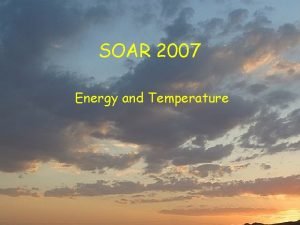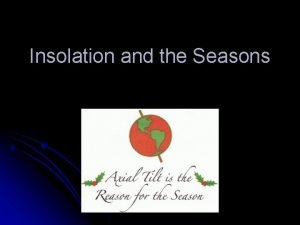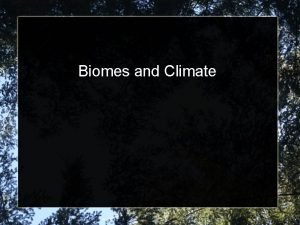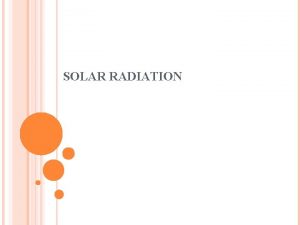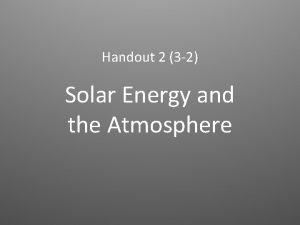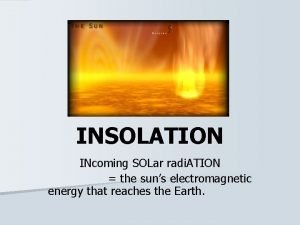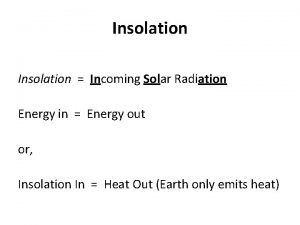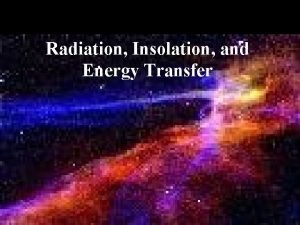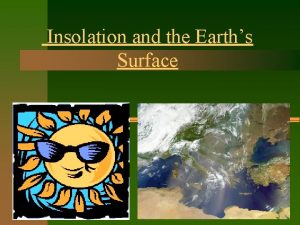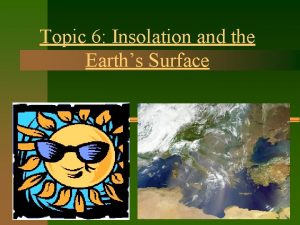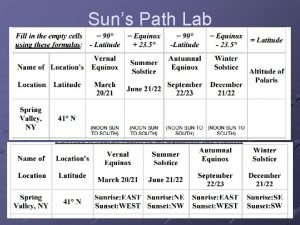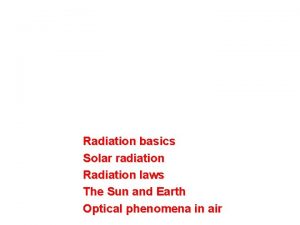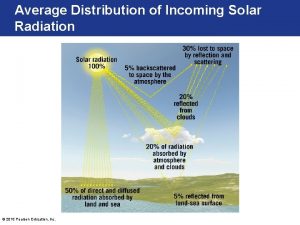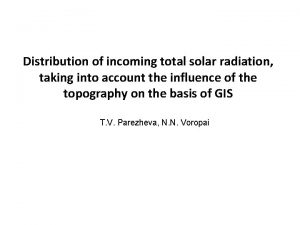Solar Radiation and Insolation Insolation INcoming SOLar radi


















- Slides: 18

Solar Radiation and Insolation

Insolation • INcoming SOLar radi. ATION • Insolation is the portion of the Sun’s radiation that is received by Earth at the outermost part of the atmosphere. • All objects radiate energy depending on their temperature.

Effects of Earth’s Atmosphere on Insolation • Insolation may be absorbed, reflected, or scattered before reaching Earth’s surface.


Effects of Earth’s Atmosphere on Insolation • Absorption of UV and Infrared – O-zone: absorbs nearly all UV radiation – Water vapor, CO 2, methane absorb infrared

These images from the Total Ozone Mapping Spectrometer (TOMS) show the progressive depletion of ozone over Antarctica from 1979 to 1999. This "ozone hole" has extended to cover an area as large as 10. 5 million square miles in September 1998. The previous record of 10. 0 million square miles was set in 1996.

Effects of Earth’s Atmosphere on Insolation • Reflection & Scattering – Clouds – Aerosols • The amount of energy absorbed from insolation is generally equal to Earth’s surface radiation. (Temperature and heat are balanced)

Absorption & Reflection at Earth’s Surface 1. Angle of Incidence – the angle at which the insolation strikes Earth’s surface. 2. Surface Characteristics – texture and color 3. Change of State and Transpiration – insolation energy used for phase changes or plant transpiration is not available to raise the temp. of Earth’s surface.


The Greenhouse Effect • Most of the energy re-radiated by Earth’s surface does not escape to outer space. • Long-wave radiation can be absorbed by greenhouse gases • Without greenhouse gases, Earth’s surface would be about 59 o. F colder than it would otherwise be.



The Greenhouse Effect • The greenhouse effect may be causing global warming. – Burning of wood and fossil fuels





 Piplmetar kako radi
Piplmetar kako radi Glagoli o suncu
Glagoli o suncu Kako radi internet
Kako radi internet Radi s
Radi s Token e dnevnik
Token e dnevnik Radi
Radi Nino radi
Nino radi Hornerova shema
Hornerova shema Angle of insolation lab
Angle of insolation lab Insolation of earth
Insolation of earth What is insolation
What is insolation Insolation of earth
Insolation of earth Whats the difference between kinetic and potential energy
Whats the difference between kinetic and potential energy Incoming sensory impulses and outgoing motor impulses
Incoming sensory impulses and outgoing motor impulses Solar radiation has a part in the water cycle by
Solar radiation has a part in the water cycle by National solar radiation database
National solar radiation database Average weather conditions over time
Average weather conditions over time Solar radiation
Solar radiation Solar radiation
Solar radiation









